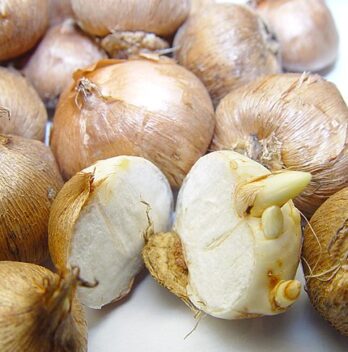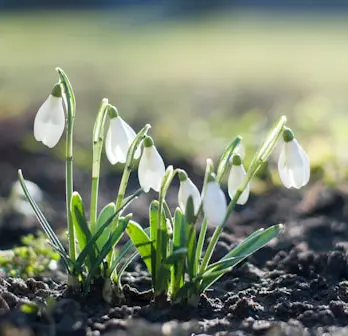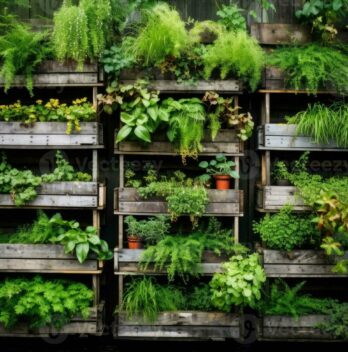Tulips are one of the most beloved spring flowers, known for their vibrant colors and elegant shapes. While tulips are relatively easy to grow, the timing for planting is crucial to ensure a healthy and beautiful bloom. This blog will cover when to plant tulips, how to prepare your garden, and the essential tools you’ll need.
Ideal Planting Time for Tulips
Tulips should be planted in the fall to allow the bulbs enough time to establish roots before winter sets in. The best time to plant tulip bulbs is when the soil temperature has cooled to around 50°F (10°C), which usually occurs in late September to early November, depending on your location. Check your gardens Hardiness Zone to ensure you know when you can plant your tulips
- Northern regions (Zones 3-5): Plant tulips in late September to early October.
- Mid-Atlantic and Southern regions (Zones 6-8): Aim to plant in October through November.
- Warm climates (Zones 8-10): You can plant as late as December or even January, but consider chilling the bulbs in your refrigerator for 10-12 weeks before planting since tulips require a period of cold dormancy.
Tulips are cold-hardy plants that thrive when planted before the ground freezes, allowing them to rest through winter and bloom once spring arrives. If you’re planting later than recommended, ensure that the bulbs still have time to root before the harsh frost sets in.

Why Fall is the Best Time to Plant Tuplips
Tulips are dormant in the summer and actively grow during the cooler months. Planting them in the fall gives the bulbs time to form robust root systems before winter. Tulips need this cold period (vernalization) to trigger the flowering process. Planting them too early in warm weather may sprout prematurely, leading to poor growth and bloom quality. On the other hand, planting too late, when the ground is already frozen, will inhibit root development.

Preparing Your Garden for Tulips
Before planting tulip bulbs, make sure your garden
- Test your
soil : Tulips prefer slightly acidic to neutralsoil (pH 6.0 to 7.0). If thesoil is too alkaline or too acidic, you may need to amend it by adding compost orsoil amendments like sulfur or lime. - Loosen the
soil : Use a garden fork or tiller to loosen the top 12-15 inches ofsoil . Tulips need loose, aerated soil to spread their roots effectively. - Add compost or organic matter: Enrich the
soil with organic compost or well-rotted manure. This ensures the bulbs get enough nutrients to produce healthy flowers. - Fertilize (optional): If your
soil is lacking nutrients, consider adding a slow-release fertilizer high in phosphorus to promote strong root growth.
Step-by-Step Guide to Planting Tulips
Once your garden is ready, follow these simple steps to plant your tulip bulbs:
- Dig holes: Plant bulbs about 6-8 inches deep and 4-6 inches apart, with the pointed end facing upwards.
- Place bulbs: Drop the bulb into the hole with the flat root end facing down and cover it with
soil . - Water lightly: After planting, water the area lightly to settle the
soil around the bulbs. - Mulch (optional): Apply a 2-3 inch layer of mulch over the
soil to protect the bulbs from extreme winter temperatures, especially in colder climates.
Essential Garden Tools for Planting Tulips
Having the right tools on hand makes the planting process smoother. Here are some essential gardening tools you’ll need:
- Bulb Planter: A bulb planter is a must-have tool for planting tulip bulbs. It allows you to dig perfectly sized holes with ease and precision. Choose one with depth markers for accurate planting.
- Garden Fork or Tiller: These are essential for loosening compacted
soil and ensuring proper drainage, which is key for healthy tulip growth. - Hand Trowel: A hand trowel is perfect for smaller planting tasks, like digging individual holes for bulbs or working in tight spaces.
- Garden Gloves: A sturdy pair of gloves will protect your hands from blisters and
soil irritation while planting bulbs. - Watering Can: A watering can with a fine spout helps distribute water evenly over the newly planted bulbs without washing away the
soil . - Mulching Fork (optional): If you plan to add mulch to your garden, a mulching fork will make spreading it evenly over the
soil easier.
The must-have tool for planting Tulips. This Bulb planter tells you exactly how deep you need to dig to plant your bulbs. This is my go-to tool for my Tulips planting.
- Easier to dig holes the proper depth
- Saves time digging holes
- Can be difficult to use with hard ground
Caring for Tulips After Planting
Once your tulips are planted, they require little maintenance through the winter. However, taking a few extra steps will ensure a beautiful display come spring:
- Protect from pests: If squirrels or other wildlife are a problem, consider covering the planting area with a wire mesh or using repellents to prevent them from digging up your bulbs.
- Avoid overwatering: Tulips do not require much water once planted. Water only if the fall is particularly dry, but ensure the
soil is not waterlogged. - Fertilize in spring: Once the shoots emerge in spring, consider giving your tulips a boost with a balanced, water-soluble fertilizer to promote lush blooms.
Conclusion
Planting tulips at the right time ensures you’ll enjoy a stunning spring display. By planting in the fall and using the proper tools and techniques, you’ll give your tulips the best chance to flourish. Remember to prepare your garden with well-drained
FAQ Section: When to Plant Tulips – A Complete Guide
When is the best time to plant tulip bulbs?
The best time to plant tulip bulbs is in the fall, about 6 to 8 weeks before the ground freezes. This gives the bulbs time to establish roots before winter. Typically, late September to November is ideal, depending on your climate zone.
Can I plant tulip bulbs in the spring?
While it’s possible to plant tulip bulbs in the spring, it’s not recommended. Tulips need cold weather to trigger their growth cycle. If you missed fall planting, consider storing bulbs in the refrigerator for at least 12 weeks to mimic winter conditions before planting them.
How deep should tulip bulbs be planted?
Tulip bulbs should be planted at a depth of 6 to 8 inches. Planting at this depth helps protect the bulbs from frost and pests, ensuring they establish strong roots before blooming.
Do tulips need full sun or partial shade?
Tulips thrive best in full sun, requiring at least 6 hours of direct sunlight each day. However, they can tolerate partial shade, especially in warmer climates where afternoon sun can be intense.
Can tulips be planted in pots?
Yes, tulips can be successfully planted in pots. Use well-draining

Brian believes the best days are spent outside with soil on your hands. He finds his rhythm in the details of the garden—from carefully tending to established plants to the excitement of propagating new varieties. A true outdoor enthusiast, Brian is here to swap stories, share advice, and celebrate the rewarding work of growing.





